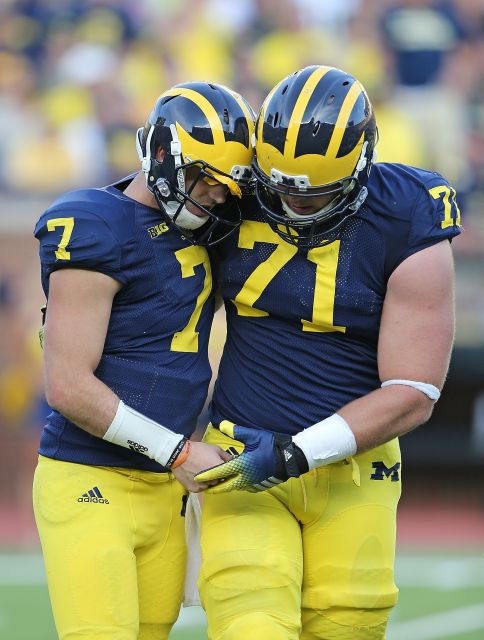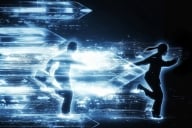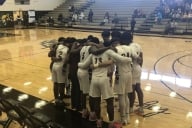You have /5 articles left.
Sign up for a free account or log in.

Shane Morris is helped off the field in September after suffering a concussion.
Getty Images
When the University of Michigan let quarterback Shane Morris stay in a game in September despite his exhibiting symptoms of what would eventually prove to be a concussion, it rejuvenated a debate over whether college football is doing enough to prevent lasting damage from head injuries.
After taking a blow to the chin, the quarterback appeared dizzy. His legs buckled and he was briefly held up by a teammate. To the game’s commentators and many watching the injury on television, the concussion was obvious. The booing from fans in the stands as Morris was sent back into the game just moments later seemed to indicate that they, too, knew something was wrong.
The university later said the incident had been an oversight -- the result of coaches having a different perspective of the injury from down on the field than those watching the game from high above or with access to instant replay. Now, college conferences are hoping to provide medical officials with that bird’s-eye view, placing additional medical observers in the replay booth and allowing them to re-watch injuries with instant replay technology.
“Everyone’s looking to evolve the medical side of providing care for student athletes, and over the last couple of years, people have wanted more sets of eyes on the field,” Woodie Dixon, general counsel to the Pacific-12 Conference, said. “The concept here is not just getting more eyes, but maybe a better set of eyes. When you’re at ground level, you can miss a few things.”
There’s still a matter of differing views, however: some medical spotters will have the ability to stop a game, while others will only be able to alert officials on the field to any potential problems.
The two systems speak to a larger debate taking place within the top conferences of the National Collegiate Athletic Association, where historically only coaches and officials have the power to stop a game or decide who gets to play. As awareness of the long-term effects of concussions grows, some within the NCAA are pushing to provide more power to medical officials to make those kinds of decisions.
While voting on new Division I rules during the NCAA’s annual meeting in January, student delegates and officials in the Big 12 Conference were largely against legislation that would require colleges to adopt a new concussion policy, saying the legislation did not go far enough to protect the health and safety of athletes. The main argument against the legislation was that it did not grant medical personnel “unchallengeable authority” in deciding if an athlete should be allowed to return to the field after sustaining a possible injury.
Brian Hainline, the NCAA’s chief medical officer, acknowledged that the proposal wasn’t as strong as he would like but urged the membership to vote for it, anyway. “I would much rather have an imperfect start than an imperfect pause,” Hainline said. One student, Ty Darlington, a football player at the University of Oklahoma, motioned to refer the proposal to a committee, which would have tabled the legislation for at least another year.
Darlington's motion failed, though 32 of the 80 voting members voted in its favor. In the end, the legislation passed by a vote of 64 to 16, to scattered applause.
In the wake of the vote, some conferences began altering their policies to grant more authority to medical personnel. The Big Ten Conference had already taken such steps in December, including adopting a new policy that Michigan implemented after its quarterback’s injury. All Big Ten institutions, the conference announced, are now required to have an “independent, neutral athletic trainer” watch football games from a replay booth. The trainer is allowed to stop a game if he or she notices a serious injury that staff on the field overlooked.
Earlier this month, the Southeastern Conference announced a similar policy. An independent medical observer will watch games from the replay booth, and he or she has the power to stop the game and force a player to leave the field for at least one play if injured. All SEC teams must use the new observers, even when playing teams outside of the conference. Nonconference teams playing SEC teams will not be required to use the observer, but can if they would like to.
Also this month, the NCAA approved an experimental rule officially granting medical observers the ability to stop games. Other conferences are putting the spotters in playback booths, but not giving them that power. The Atlantic Coast Conference announced last week that it would now use medical observers, but -- unlike the Big Ten and the SEC -- they would not be independent of the teams.
"This team-specific medical observer will have the benefit of knowing the medical history of the players, because it will be somebody who is involved with them on an ongoing and day-to-day basis," John Swofford, ACC commissioner, said during the conference’s media day last Monday.
Swofford added that the medical observers can't stop games but they will be able to communicate with the team's sideline and can ask to have a timeout called or have a player pulled from the game.
The Pacific-12 Conference will use a similar system. Like Swofford, Dixon, the general counsel for the Pac-12, said that using team-specific observers means that the spotters will “really know the medical histories of individual players.” That would help in assessing the seriousness of some injuries, Dixon said, but it also means the conference was not comfortable with giving team-affiliated spotters the power to stop a game.
“There are some competitive issues that go along with someone stopping the game,” he said. “Having someone that is not an official or a coach calling a timeout is not something we felt that we wanted, especially after we decided we wanted the two spotters to be affiliated with the schools. Some like the neutral concept. Others thought it would be important to have someone who has intimate knowledge of the team. We’ll have to wait and see what works best.”
Lewis Margolis, an injury control researcher and an associate professor of child health at the University of North Carolina at Chapel Hill, said an additional set of eyes with a fresh perspective of the game is a welcome change to college football. But he questions not granting all medical spotters the ability to stop the game, given those with that power are arguably even more associated with the teams than medical personnel to begin with.
"To me, there is no justification for having these people, unless their function can be carried out," Margolis said.








